Roti, Chapati, or Phulka is a round flatbread native to the Indian subcontinent. It is made from ground wheat flour (known as gehu ka atta). In some parts of India, people also use maize flour, jawar, ragi, rajgira & bajra flour. The word is derived from the Sanskrit word ‘Rotika’.
How this flat Indian bread originates in the Indian subcontinent?
There are a lot of stories around the world regarding the evolution of flatbreads. But Roti or Rotika originated in 6000 BCE or maybe before that. During the Harrapan civilization, farming was the main occupation & people used it to grow wheat & barley for daily needs and trade. The book called ‘Indian Food – The Historical Campanion’, written by K.T Achaya (chapter-2) mentioned that barley & 4 different varieties of wheat were grown around 6000 BCE. The archeological survey found flat metal & clay plates resembling modern tawas, which have been found in plenty of Harrapan sites. Clay ovens were discovered at Harrapan civilization sites.
That also shows concrete evidence of the origin of Rotika during that era. Trade was limited to luxury goods, metal & textiles during that time. That was the first trading era in the history of civilization & the Harrapan trade with Mesopotamian civilization. People traveled along with their food & that way the Roti became popular.
Sanskrit & Kannada literature written between the 10th & 18th centuries mentioned the word Rotika in people’s regular diet.
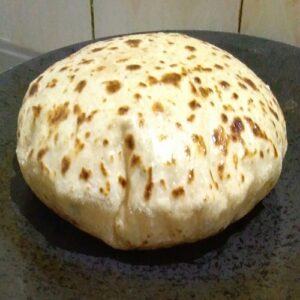
Roti | Phulka | Chapati Recipe
ArtiIngredients
- 2 Cups Whole Wheat Flour
- 1 Cup Luke Warm Water
Instructions
- Take whole wheat flour in a bowl. Add a bit of water & start mixing.

- Add water in small parts while kneading the dough.
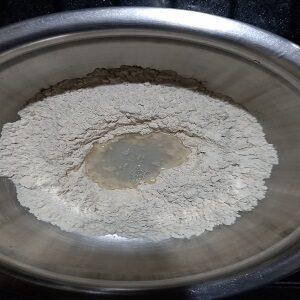
- The dough should be kneaded until it becomes soft, smooth & pliable. Keep adding the water in small parts until the dough becomes soft & smooth. Keep it for rest for 30 minutes & cover it with a wet cloth.
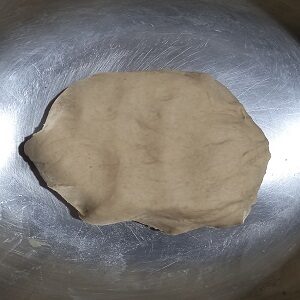
- Now make small balls of dough.

- With the help of a rolling board & rolling pin, roll the dough ball into a flat circle. Keep dusting the rolling board & dough ball with whole wheat flour, so it will not become very sticky. Otherwise, the rolled flat dough will crack.
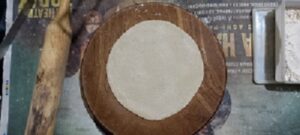
- Heat the Tawa (Round Iron Griddle) well in medium flame. Tawa should be hot enough to put the flat round dough circle.
- First, cook one side. Cook one-fourth & then turn the other side. After a few seconds, you find the air pocket-forming.
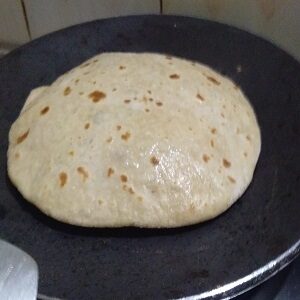
- Slowly press the flat side of the bread, so the entire roti gets puffed well. Remove it, add some ghee or butter (Optional) and serve it with the main course.

Notes
No meal in India is complete without Roti, especially in Northern, central & western India.

The recipe of Phulka is not yet changed & are following for thousands of years. During a time, the influence of different cultures & ethnic groups created a new variation. One will find different types of Indian bread across the Indian subcontinent, but the originally Roti or chapati, or Phulka recipe is still popular in Indian kitchens.
Get to know the most exciting Indian food story at our platform. Stay connected.
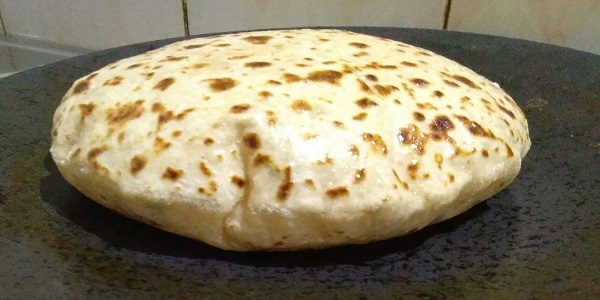


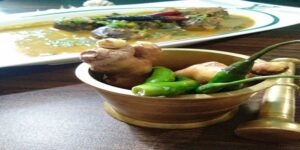
Very Informative.